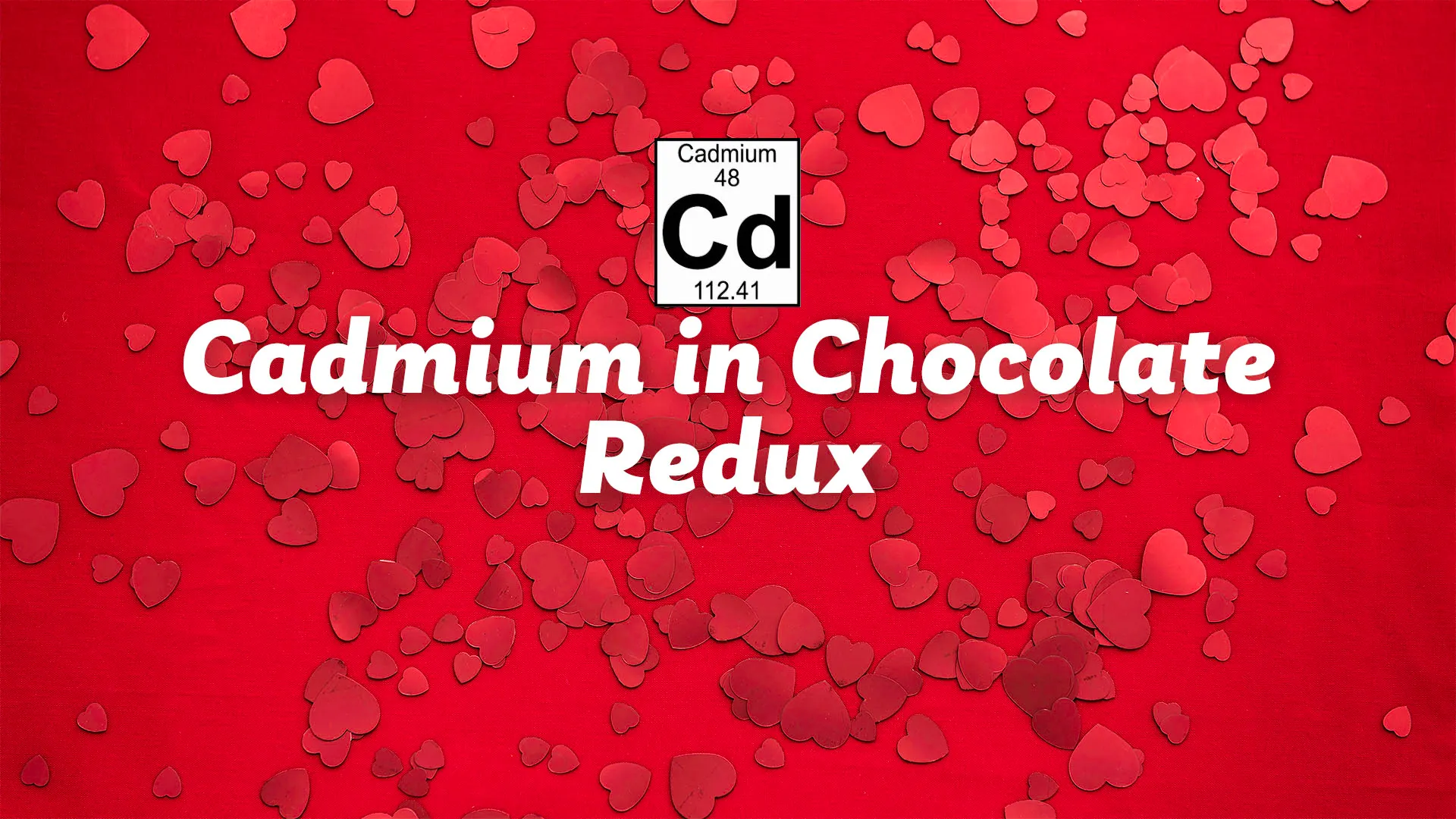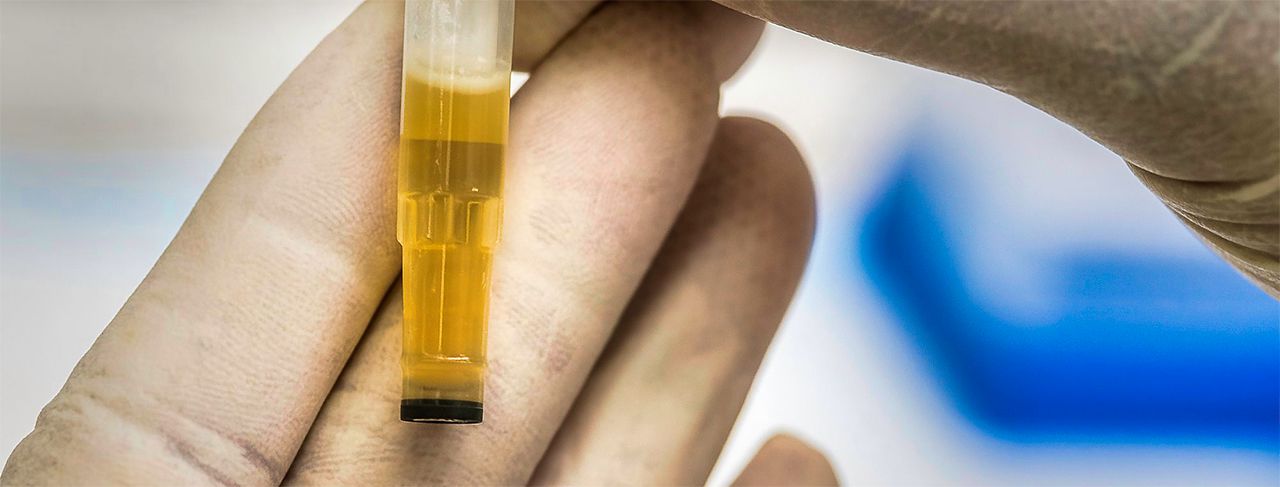TheChocolateLife::LIVE – CADMIUM 2.0

Episode 61 streams live from 12:00 EDT Friday, Sept 30 w/ special guest and ChocolateLife contributor Keith Ayoob. Join us as we explore the topic of cadmium in chocolate in depth – with a close look at an influential source of (mis)information on this topic.
After my “landmark article” (wink) documenting why cadmium in cocoa is almost a non-issue (verified by the blood cadmium level of my cocoa-powder-loving self), the CODEX Alimentarius remained steadfast and met again in May 2022 to discuss the issue.
CODEX Alimentarius, literally ‘Food Code,’ defines itself as the “central part of the Joint FAO/WHO Food Standards Programme ... established by FAO and WHO to protect consumer health and promote fair practices in food trade.
A colleague advised me not to expect much movement from CODEX for a while in the issue, as, in her opinion, they take forever to act. Searching the scientific research literature once more, I found no new evidence of dietary cadmium as a public health issue.
Cadmium is naturally present in nearly all foods ...
... and even high in many cocoa powders and chocolate bars, recent research found that the food groups contributing nearly 80% of our “food-cadmium” are cereals/breads (34%), leafy and root/stem vegetables (26%), potatoes (11%), and legumes and nuts (7% combined). Cadmium can also be found in meat, fish and dairy foods as well, with organ meats (think kidneys and liver) a more concentrated source than other animal foods, but these aren’t eaten all that regularly. Smokers also get slightly more, as tobacco smoke contains cadmium.
Some Natural Protection
Having good iron stores has been found to reduce the absorption of cadmium. Put another way, the lower your iron stores, the higher the absorption of cadmium from the gut. This makes it somewhat ironic that liver, being an organ meat, is higher in cadmium, but also is one of the best sources of iron, so may also help you reduce your absorption of cadmium.
Additionally, I’d noted in my previous post that healthful foods like vegetables and whole grains, primary sources of cadmium, also contain various antioxidants and other compounds that help reduce the absorption of cadmium. Count the catechins in cocoa products among such compounds.
Big Chocolate To the Rescue … Not
To my knowledge, none of the big chocolate makers has funded a study to look further into the issue of cadmium and cocoa. If there seems to be no issue, why wouldn’t they want to get that message out to consumers and reassure them? My guess: consumers aren’t even aware of cadmium in cocoa and the mere mention of a trace metal in a food brings it top of mind.
You can see the headline, “Chocolate Company X says cadmium in cocoa is not a problem.” Instantly, it’s a problem. Food and nutrition activist organizations, eager to gain the spotlight (and donations) love this kind of stuff. Sensation sells, good news and reassurance don’t.
Toxicity Testing: Urine vs. Blood
Last year I had my blood tested for cadmium, a useful means of detecting acute exposure. I didn’t suspect I’d suddenly been exposed to a massive amount of cadmium, but I do use a lot of cocoa powder, one of the most concentrated sources of cadmium. The result showed my blood cadmium level was well within normal limits, not even approaching the reference range for smokers.

A 2016 research review found urine cadmium levels to be useful for detecting long-term exposure to cadmium, although it can take up to a year for increased levels to show up. Since it’s now over a year since my blood level was taken, and my intake of chocolate and cocoa (especially daily cocoa powder) has been consistent, I reasoned a 24-hour urine test would now give me an accurate estimate of long-term exposure, and if I needed to be concerned.
I went to a well-known national chain of labs to get my “container,” collected urine for exactly 24 hours, and dropped it off at the same lab.
Reference range for urinary cadmium: < 5.0 mcg/L (micrograms per liter)
Context Is Everything
My intake of cocoa powder averages 1/3 to 1/2 cup/day. I estimate my craft chocolate consumption at 40-50 gm/day. Then there are my other sources of cadmium, including whole grains and an often hefty intake of fresh fruit and vegetables.
This test of chronic exposure to cadmium indicated my levels to be just one-tenth of the maximum acceptable level.
To be fair, my level is higher than levels found in a recent study of Danish non-smoking adults, where the 75th percentile of urinary cadmium was 0.34 mcg/L.
As with my blood level, I wasn’t particularly worried about my urinary cadmium, but it was reassuring that, even with a fairly hefty daily intake of a high-cadmium food sources like cocoa powder and craft chocolate, plus my daily (and often high) consumption of fruits, vegetables, whole grains, and other cadmium sources, this test of chronic exposure to cadmium produced nothing of consequence.
Caveat: Nothing In Science Is Absolute
There may be instances where the cadmium in cocoa might be a concern, such as in small children or persons with kidney disease and the like, although as a pediatric nutritionist of many years I’ve never heard of a child being advised to avoid cocoa products in order to minimize cadmium exposure. Most kids aren’t eating very dark, single-origin craft chocolate from South America, for instance.
However, science and particularly nutrition science, is constantly evolving. When there is sufficient credible evidence, recommendations may need to change. For now, I’m confident continuing my current consumption of cocoa and chocolate, both for enjoyment, and the antioxidants. Indeed, as I write this, I’m enjoying some of my hot chocolate infused with Earl Grey tea and sweetened with stevia leaf extract. Stevia may be difficult to use in bar chocolate, but in homemade hot chocolate it’s an excellent way to replace added sugar.
A Conclusion
Efforts to remediate cadmium in the soil should absolutely continue, as part of industry “best practice.”
However, as a consumer however, I’ll relax.
Resources

The first thing to note about the linked report is that it is NOT peer-reviewed.
From my look at the results posted in the table on this page, it appears there are some very serious data quality issues that would need to be addressed for it to be considered in a respectable journal on statistics, epidemiology, or anywhere, actually. IMO. We talk about some of the issues regarding data quality (specifically the lack thereof) in the live stream.
Live Stream Links
Watch/Participate on YouTube, Facebook, or LinkedIn.
Visit TheChocolateWire Channel on YouTubeMy LinkedIn profile
TheChocolateLife page Facebook Event
Leave them in the comments.
